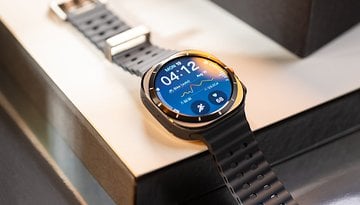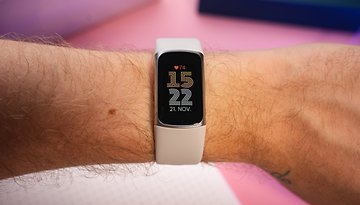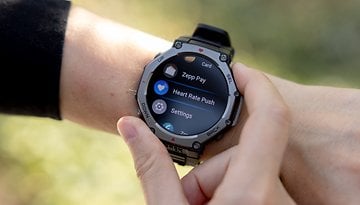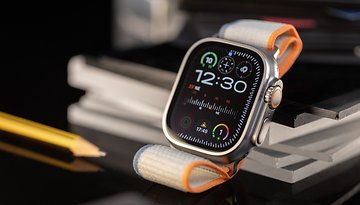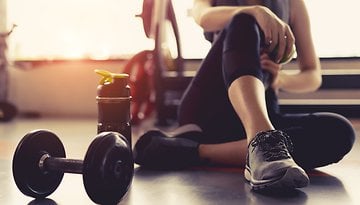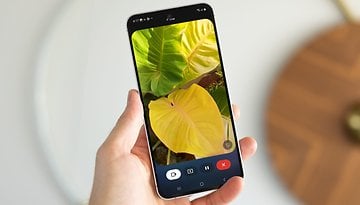How to Lose Weight with AI, Smartwatches & Tech
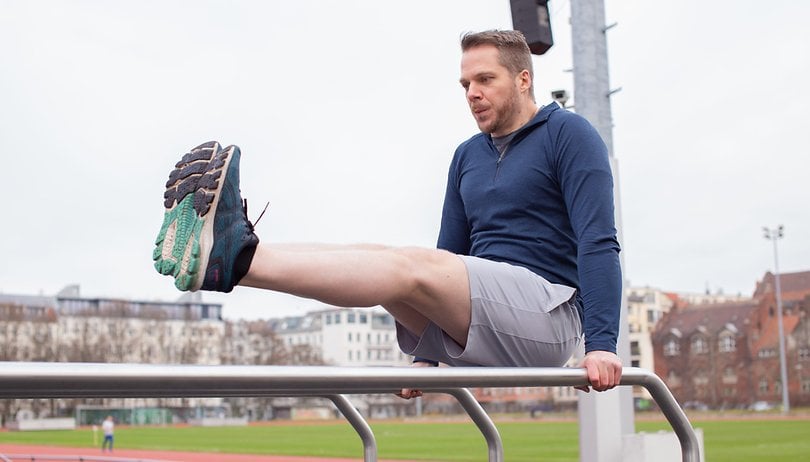

Read in other languages:
From Ozempic to body fat scales, from ChatGPT coaches to smartwatches: there are countless promises for remedies and gadgets that will help you lose weight quickly—supposedly in a healthy way and perhaps even while lying down, as dubious providers promise. There is a simple basic principle behind almost all weight loss tips. Find out what it is and what it has to do with technology here.
Do you really need a gym, a new smartwatch, an AI trainer, or a body fat scale to lose weight? Of course not, because most of the work is simply up to you. But of course, all these tools can still help you lose weight, build muscle, or simply feel better all around. In this article, you will find a range of approaches, concepts, and tips on how you can work towards a healthier and fitter body in the new year.
There are tons of books on every aspect of fitness, and there's only enough space here to touch on all of them, so I'd like to give you a holistic overview of what I've learned from a decade of enthusiasm for technology and fitness, including a fitness trainer B license, even though I've admittedly not yet passed my final exam.
1. Lose weight quickly and healthily? Evolution doesn't help
Evolution is to blame for the fact that we can't just sit around on the sofa all day and shovel fast food into ourselves, because the body is a machine that has been perfected over the course of evolution. Survival is our main goal, surpassed only by successful reproduction, and until the age of supermarkets, lack of food was the greatest danger for thousands of years.
Therefore, any surplus energy is meticulously stored as fat for times of crisis. Due to their genetic inheritance, each person has different predispositions as to where and, above all, how much fat is stored in the body. Did your ancestors have to fight hard to survive? Bad for you in these times of food delivery. because your body is probably more effective at hoarding flab.

In addition to genetic predisposition, metabolic training also plays a role. Those who regularly starve themselves of pounds in crash diets, for example, train their metabolism even more to hoard calories in the form of fat. Read below to find out what this has to do with the yo-yo effect.
2. Your body weight: Product of calorie consumption and diet
Regardless of your genetic makeup, the basic idea behind weight loss and weight gain is quite simple: if you eat more than you burn, you will gain weight—and logically the other way around. Yes, there are countless trends such as "no more carbohydrates after 6 pm", intermittent fasting, low-carb high-fat diets, or some crazy stuff from Gwyneth Paltrow. Some of it is just useless at best, other measures actually push your metabolism in a different direction in the long term or help you to develop generally healthier eating habits and then lose weight.
In my experience, however, the leverage is much greater if you view your body as a closed physical system, and the input-output principle applies here. The very first step is to get to know your calorie intake (input) and your consumption (output).
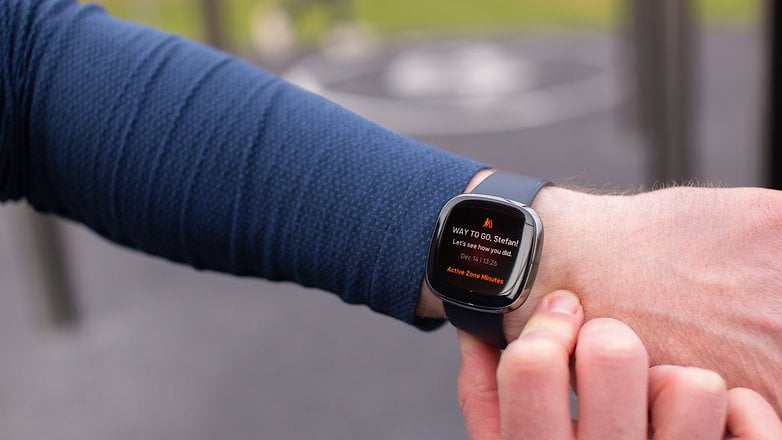
2.1 Input: Counting calories can be a real pain
Yes, writing down all your meals and drinks rivals sorting screws in terms of popularity. But it is incredibly helpful. There are also numerous apps that simplify the task enormously. Instead of typing in the calorie content, fat, etc. of your sandwich, you can simply scan the barcode on the packaging with Fatsecret, for example, and have your lunch written down.
In 2025, it will be even easier with AI: apps such as Cal AI (Android) or Calorie Mama AI (Apple) will use photos to estimate the calorie content and nutritional values of your meals. After all, the steak in the restaurant rarely comes with a barcode. While the idea is great, the implementation still seems to be lacking, at least at the turn of the year. Although both apps have good ratings at first glance, there is a lot of criticism in the comments.
With or without AI, there's a bonus: If you stick with the nutrition tracking for a few weeks, you quickly develop a very good feeling for your own diet—and learn to listen to your body at the same time.
In addition to the pure energy intake in kilocalories, most apps also record the macronutrients that make up the energy intake. The macronutrients are fat, protein, and carbohydrates, which are often referred to as "carbs". Bad news for the boozehounds out there: Alcohol is also a macronutrient and has a lot of calories. Two shot glasses of tequila are roughly equivalent to one shot glass of olive oil in terms of calories. Delicious.
Macronutrients in comparison
|
|
protein | fat | Alcohol |
|---|---|---|---|
| 4 kcal/g | 4 kcal/g | 9 kcal/g | 7 kcal/g |
Whether low-carb or high-carb: there are countless philosophies on how the energy supplied should ideally be made up of macronutrients. Although the composition has no or only a secondary influence on weight gain or loss, depending on the source of information, it still plays a role for the body. For example, I feel tired all the time on low-carb diets because my body lacks carbohydrates as an easily available source of energy. And with the wrong meals at the wrong time, you simply tend to eat too much.
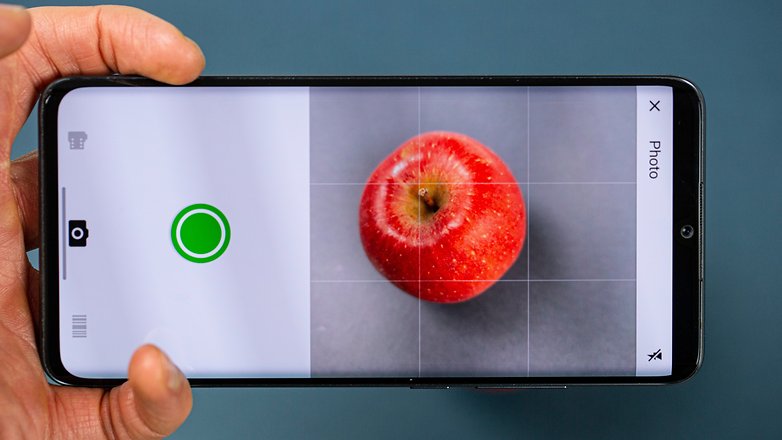
I've always done best with a macronutrient ratio of between 60:20:20 and 80:10:10, based on carbohydrates to proteins to fats as a proportionate energy source. If you track your diet for a while, you can see the distribution of macronutrients in the apps and learn for yourself what works best for you. Some apps also offer the option of tracking your "gut feeling" and correlating it with your diet.
In my opinion, the best app for counting calories is Cronometer. In addition to the macronutrients mentioned above, you can also track micronutrients, i.e. vitamins, trace elements, etc. In the following article, you can read a more detailed comparison of popular calorie counter apps:
| App tip 1 | App tip 2 | |
|---|---|---|
| The product | Cronometer | FDDB Extender |
| Illustration |  |
 |
| Description: Cronometer | Cronometer not only tracks macronutrients but also micronutrients. Even if the database unforgivably did not recognize Nutella in our test, it still has the vast majority of foods available. Also great: Cronometer also has a browser version so that you can conveniently view your nutritional history on the large display. The Pro functions such as meal photos and detailed analyses cost a good $60 per year. | The Food Database is the dinosaur among databases for food, nutrients, etc. - and with the FDDB Extender it comes as an app on your smartphone. The range of functions is very similar to Cronometer. A few additional functions such as targets for macronutrients cost $3.49 per month. The app can also be connected to Google Fit, Samsung Health, Fitbit, or Garmin Connect. |
| Download the app |
Due to a lack of space on this page, this is just a side note: There is still a huge amount to consider in terms of nutrition apart from macronutrients. "Fast carbohydrates" are (usually) worse than "slow carbs" (keyword: glycemic index), there are good and bad fats (keyword: saturated/unsaturated), and there are also huge differences in protein (keyword: value).
Oatmeal (slow carbs), for example, makes you feel full for much longer than white toast (fast carbs), which simply makes it easier to eat less. There is a great deal of literature on this subject, and I am sure you will quickly find what you are looking for at your local bookstore or in relevant forums.
2.2 Output: How to estimate your calorie consumption
Once you have determined the input, it's time to work out the output. This is made up of two parts: the basal metabolic rate and the power metabolic rate. The basal metabolic rate quantifies how much energy you consume while oxidizing in everyday life—without sport or gardening.
There are simple rules of thumb and calculators for the basal metabolic rate, such as this one from fitness experts. Many fitness trackers and smartwatch apps also determine your basal metabolic rate during setup.
Finally, the power metabolic rate quantifies the total "on top" consumption from endless pizza dough kneading to HIIT sports units. Fitness trackers and smartwatches are a great help in determining your power metabolic rate. They record your daily movements and heart rate and can therefore estimate your active calorie consumption reasonably well. You can read more about calorie consumption and how to calculate it correctly here:
You can find more fitness trackers and smartwatches for monitoring your calorie consumption in the articles linked below. If you don't want to buy any additional hardware, pedometer apps can help—they allow you to estimate your energy consumption with the help of your smartphone. However, sports units cannot be recorded accurately in this way due to a lack of heart rate measurement.
- The best fitness trackers for Android and iOS
- The best smartwatches for Android and iOS
- The best pedometer apps in comparison
If you are particularly interested in fitness trackers from Fitbit or watches from Garmin, you will find a complete look at the manufacturers' respective portfolios in the previously linked articles - and we also have detailed buying advice for the Apple Watch and its various models.
3. Sport as a calorie driver: Consumption versus input
If you now know the input and consumption, this should result in weight gain or loss. Unfortunately, this is not quite so easy in practice, as the body is an extremely complex system and the calorie values are only ever estimates.
However, you can improve accuracy by logging your weight for a few weeks, either with an analog scale and pen or - more conveniently, of course—with a smart body fat scale and smartphone app. If there are any inconsistencies, you will need to adjust your basal metabolic rate calculated using a rule of thumb until everything is correct.
Or you can finally stop smuggling all those chocolate bars past the calorie counter.
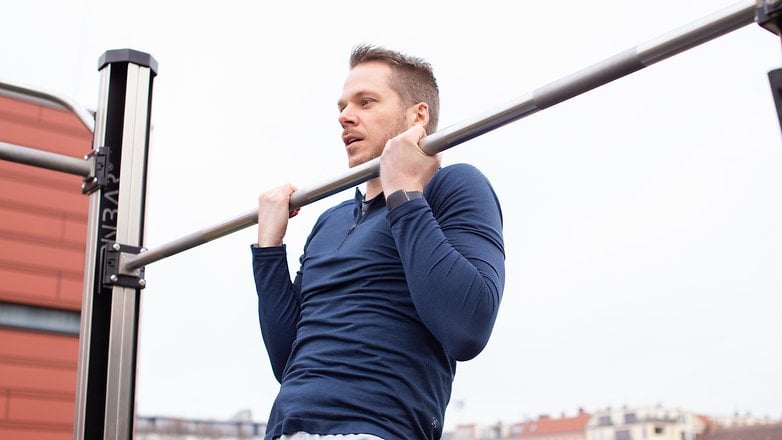
If you gain or lose weight, there is also another variable: How much sport do you do—and how much strain is put on your body? This is where the evolution mentioned above comes into play again, as muscles are a luxury for your body in evolutionary terms. At rest, they consume a lot of valuable energy and are therefore broken down when they are not absolutely necessary for survival—i.e. when they are constantly in use.
This applies in particular to calorie deficits: If you don't exercise when your calorie balance is negative, your body panics and doesn't just rely on your fat stores for energy, but even prefers to use your muscles as an energy source. After all, they need energy themselves and make survival even more difficult during a long famine. From an evolutionary point of view, it is better for your body to hold on to fat.
If you then go back to eating as before after an exercise-free crash diet, your body, which has lost a lot of muscle, will have a lower basal metabolic rate than before. With the usual energy intake and still without exercise, you will then gain weight again in leaps and bounds—and this time primarily fat, as the next famine could be just around the corner. This harmful weight fluctuation with long-term muscle loss is known as the yo-yo effect.
If, on the other hand, you exercise vigorously in a calorie deficit, your body considers your muscles to be important for survival—and tends to draw more on your fat reserves for energy. Similarly, if you have a calorie surplus plus exercise, you will build more muscle than fat. In traditional bodybuilding, for example, many athletes therefore alternate between so-called "bulk" and "cut" phases, in which muscles are first built up in excess, and then the fat added in the course of this is trained off again in a calorie deficit.
In the table below you can see three popular body fat scales that you can use to track your weight and body fat percentage as well as many other values. A major advantage of the Withings Body Scan is the sensor rod that you hold in your hand during the measurement. This allows the scale to analyze the upper and lower half of your body separately.
Top Smart Scales for Precision Health Tracking
| nextpit recommendation | Price tip | Luxury version with handle | Price tip with handle | For Garmin fans | Mid-range tip | |
|---|---|---|---|---|---|---|
| Product | ||||||
| Image | 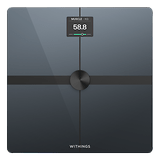 |
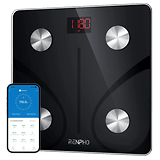 |
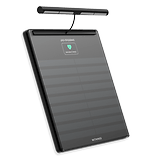 |
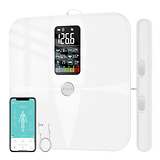 |
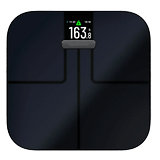 |
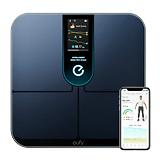 |
| Deals* |
|
|
|
|
|
|
4. the right sport is more than just a calorie driver!
Of course, it's great to use sports to boost calorie consumption, build muscle, and reduce fat reserves. After all, feeling good about your appearance makes a huge contribution to overall satisfaction. However, there are many more aspects to exercise than just a lower body fat percentage.
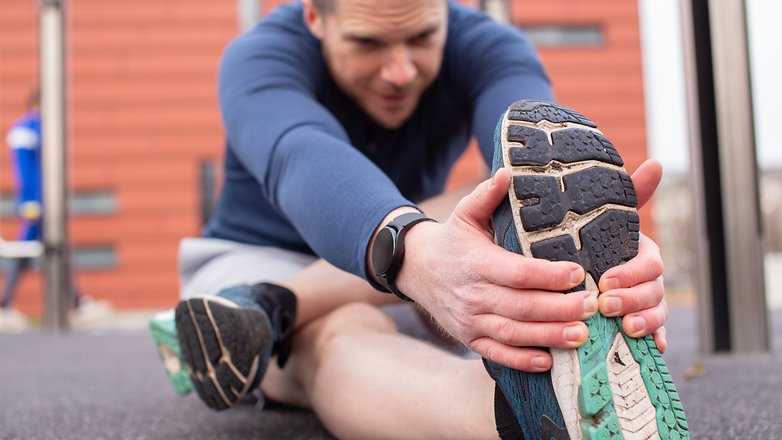
All endurance sports, for example, not only increase calorie consumption but also strengthen the cardiovascular system, lower your resting heart rate, and have a positive effect on your blood pressure. In addition, endurance sports usually force you to put down your smartphone and really clear your head.
However, most endurance sports only engage the lower half of the body. For screen workers in particular, it is extremely important to train the shoulders and back. Whether you feel more comfortable on the yoga mat or during full-body HIIT sessions doesn't matter—what is important is holistic training including proper stretching. After shoulder surgery and a slipped disc, I can tell you a thing or two about it.
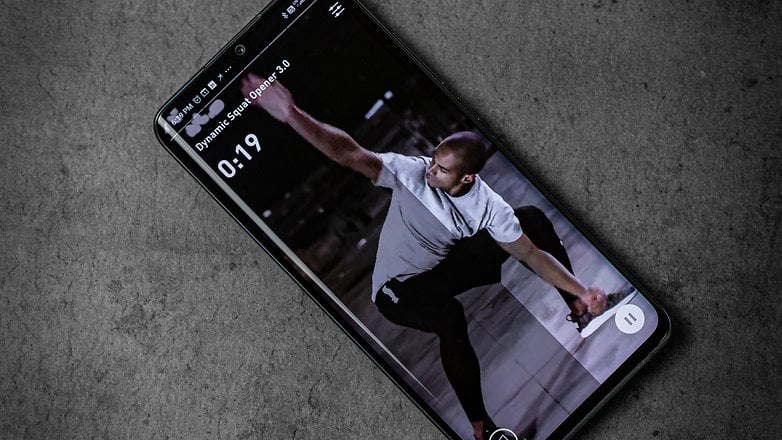
And very importantly, if you're starting to exercise after a long period of abstinence, make sure you're observed at least a few times to ensure you're doing the exercises correctly—for example by a sports-loving friend or a personal trainer (video calls are also available). If you have any injuries or illnesses, it's also better to talk to your doctor beforehand, as doing exercises incorrectly can cause a lot of damage.
| Editor's tip | Price tip | |
|---|---|---|
| product | Freeletics | adidas Training by Runtastic |
| Picture |  |
 |
| Description | Freeletics is probably THE app when it comes to independent fitness training. Here you get countless training plans and workouts that explain every exercise perfectly with great videos. But the best thing about Freeletics is the community that meets in many places around the world to train together. If you pay (from around $35 per month), you have access to the full training program—and an online coach. | Runtastic is now part of Adidas—which is why the training app is now also called adidas Training by Runtastic. In the app you will find numerous workouts and training plans with different goals, from losing weight to building muscle. |
| To the app |
Whatever you do, the most important aspect of sport remains: find something you enjoy. Something you want to do regularly. It usually takes one to two months to internalize a new training routine. You have to stick with it for that long and then it almost goes by itself.
- Exercising at home: The best fitness apps for your smartphone
- The measured self: What do resting heart rate, SpO2, REM sleep & co. mean?
5. And now you!
One thing is very clear: Fitness is not a final destination, but a lifelong journey with many stops along the way. For example, I was always too heavy until around 2012. My maximum weight was around 95 kilograms for a height of 184 cm—and no, these weren't mountains of muscle. That may be a far cry from morbid obesity, but I didn't feel comfortable. Not in the swimming pool and not even when walking a few floors filled my lungs with what felt like two pounds of thumbtacks.
It's now 2025 and I'm not much lighter at just under 90 kilograms but I've built up a lot more muscle and, above all, I feel fit. I ran the Berlin half marathon a few years ago without any extra training worth mentioning and the day after a twelve-hour flight, I can do double-digit pull-ups depending on my level of training and—more importantly—I usually feel really good in my body. When the satisfaction decreases, I realize: "Ciao pizza, hello sport. It's time to work on my balance again."
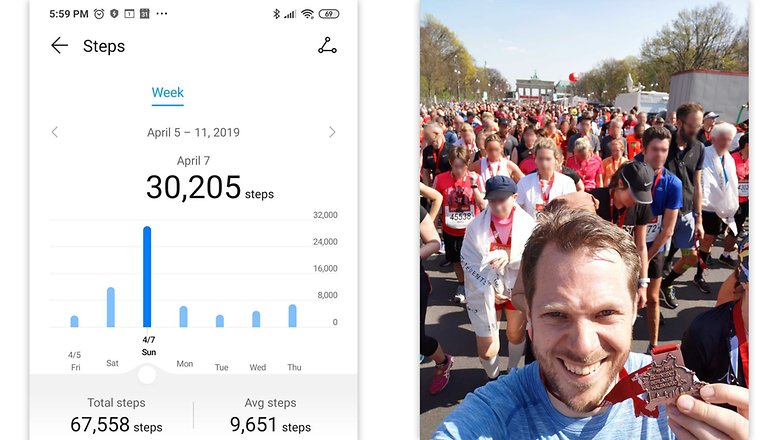
And you'll feel the same way. Fitness is a lifelong journey full of trial and error. I've tried a lot when it comes to diet and exercise, from vegan to high-protein, from yoga to plyo and pumping, and I've suffered three serious injuries including two operations. Perhaps this article can shorten a few of your trials and tribulations and help you simply feel good in your body.
If you've made it to the end of this article, then one thing should be clear: You don't need apps or gadgets to lose weight. But these little helpers can be a great motivator. For me personally, being able to track my progress over the months and years was a key to success. And even though I have piles of analog training plans with years of training history in my basement, it's easier and clearer with an app.
My goal for 2025 is to get my fitness back on track. The birth of my daughter at the end of 2023 has significantly shifted my priorities in life, and instead of workouts, my focus has often been on spending time with my family or simply sleeping. Yes, perhaps we simply ordered more often from food deliveries and cooked less fresh food. But the journey is not over, and in 2025, my fitness will once again become more of a part of my everyday life.
Stay tuned and have a great start to the new year!







